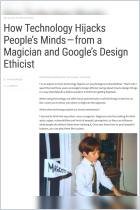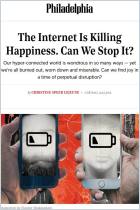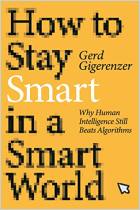Tristan Harris, dubbed the “closest thing Silicon Valley has to a conscience” by The Atlantic magazine, argues convincingly that the world’s most sophisticated digital platforms – YouTube, Facebook, Google, and the like – are designed to “downgrade humans.” Happily, the bleak situation Harris outlines isn’t irreparable. What if technology companies shifted their focus from vying for people’s attention to helping individuals become the best versions of themselves? Harris explains how the tech industry and society can accomplish this pivot.
Digital technology is exploiting human weaknesses.
According to biologist E.O. Wilson, the nub of the world’s problems is a blend of humans’ “paleolithic emotions, medieval institutions and godlike technology.” While many technologists worry about the singularity – the moment that artificial intelligence will outsmart human intelligence, humanity’s greatest strength – few are concerned with a much earlier threshold – that is, the moment that AI overwhelms human weakness. As the tech industry approaches this juncture, it is becoming increasingly responsible for myriad social problems including technology addiction, depression among youngsters and the polarization of society. Technology is eroding human attention, values and civility; weakening social ties and relationships; and dissolving identity and even free will – all of which contribute to “downgrading humans.”
An “extractive attention economy” that overwhelms our ancient human instincts lies at the root of all these problems. So far, tech developers have focused on keeping users’ attention for as long as possible. YouTube, for example, uses AI to...


























Comment on this summary